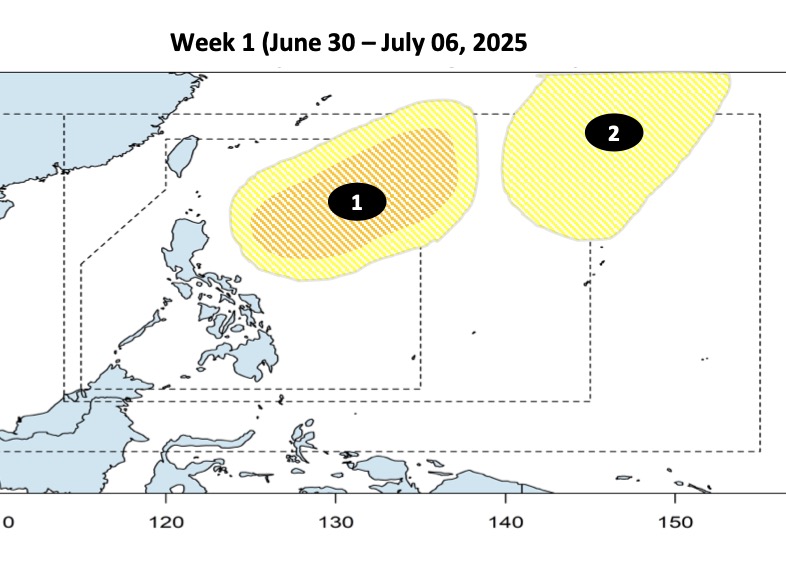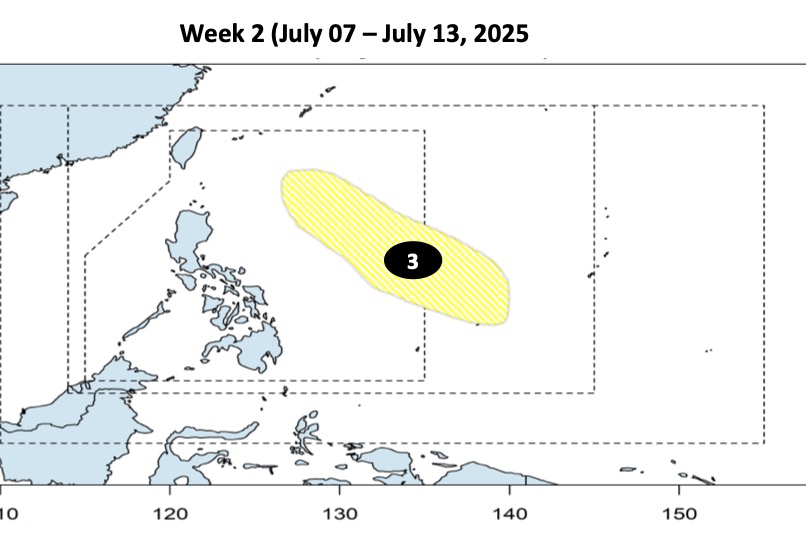The latest storm and low pressure information from the Philippine Atmospheric, Geophysical and Astronomical Services Administration (PAGASA) on June 30 said that the two low pressure systems near the East Sea are expected to form one after another during the week from June 30 to July 6. The first low pressure is expected to appear in the Philippine Forecast Area (PAR). This low pressure is expected to strengthen into a low to moderate storm.
Also during the forecast period, a second low pressure is forecast to form at the northeastern boundary of PAGASA's TCAD forecast area, with less chance of strengthening into a storm than the first system.
Another low pressure is expected to form between the eastern boundaries of TCAD and PAR between July 7 and July 13. This third depression is unlikely to strengthen into a storm during the forecast period.
According to PAGASA, the July typhoon near the Philippines usually has 3 main moving directions: First, the typhoon heads north of the PAR but does not make landfall in the Philippines but loops towards Taiwan (China) or Japan. Second, the typhoon makes landfall in the northernmost islands of the Philippines, then heads towards China or Hong Kong (China). Finally, the storm makes landfall in the area from the central to northern part of Luzon Island, Philippines, enters the East Sea and heads towards Vietnam.

Previously, Philippine typhoon forecasters said that the country could record 11 to 19 typhoons between July and December 2025. Of which, July is expected to have 2 or 3 storms, August has 2 or 3 storms, September has 2 to 4 storms, October has 2 to 4 storms, November has 2 or 3 storms and December has 1 or 2 storms.
On average, 19 to 20 typhoons enter or form within the Philippine PAR forecast area each year, with eight to nine of them making landfall. PAGASA expert Joe Figuracion noted that storms that form in the coming months are more likely to make landfall.

In late June, typhoon forecasters from the Taiwan Meteorological Administration (CWA) said the island was likely to be affected by 3-5 typhoons in the second half of 2025.
An average of 26.09 storms will form annually in the northwest Pacific and South China Sea from 1958 to 2024, with more than half occurring in July, August and September.
CWA Forecast Center Director Chen Yi-liang explained that in the past 3 months, the two most common paths of the typhoon have been: the path through Taiwan (China) and the Philippines and the path northward through the waters east of Taiwan (China). Whether these storms will have a direct impact on the island depends on the actual distance from Taiwan (China).
At the start of the 2025 hurricane season, only two storms will form in the northwest Pacific basin, below the historical average of 4.3 storms.











